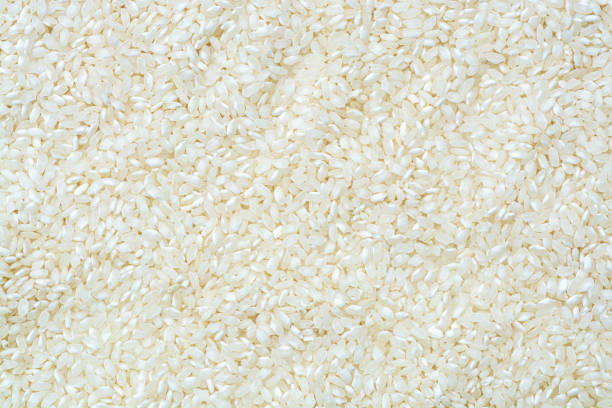Introduction – Current State of Play: The White Rice Sector in the Philippines
The white rice market in the Philippines is riding a rollercoaster in 2025. If you’ve been watching the headlines, you’ll know this isn’t just about what’s on your dinner plate—it’s a story of farmers, import bans, typhoons, and economic pressure points. In short, it’s a whole ecosystem in flux.
In an attempt to protect local farmers from plummeting farmgate prices, the Philippine government suspended imports of regular and well-milled rice for 60 days starting September 1, 2025. This move came just months after the government slashed rice import tariffs from 35% to 15%, hoping to lower consumer prices and tame inflation.
On the other hand, the country saw a record domestic rice production of 9.08 million metric tons in the first half of 2025. Sounds great, right? But here’s the catch: demand is growing even faster. The USDA projects rice imports to still hit 5.2 million metric tons this year due to weather disruptions and stockpiling needs. Add to that a string of typhoons that hammered production regions, and you’ve got a market that’s anything but predictable.
In these turbulent conditions, businesses need to be quick on their feet. Whether you’re importing rice, selling it wholesale, or managing procurement for a food business, being up to speed is now mission-critical. Platforms like Freshdi are proving invaluable by helping businesses track supplier reliability, market trends, and RFQ activity across the region.
Deep Dive – What’s Making Headlines? Key Recent News & Impacts
While there haven’t been any groundbreaking new technologies or expansion announcements lately, the market is buzzing with policy-driven shifts and climate-related disruptions:
-
Import Freeze Shockwave: The 60-day import suspension in September 2025 sent ripples across the supply chain. Retailers scrambled to secure inventory, and prices edged upward.
-
Tariff Rollercoaster: Tariff cuts in 2024 helped ease prices, but rising pressure from farmer groups could push the government to revert to higher tariffs, which will affect sourcing costs.
-
Nature’s Curveballs: A series of typhoons—including Typhoon Egay—significantly reduced harvest areas, affecting crop yields and quality.
-
Volatile Prices: In early 2025, some imported rice varieties reached up to PHP 65/kg. Government-imposed MSRPs and buffer stock releases by the National Food Authority aimed to calm the storm.
All this just proves: in 2025, the Philippine white rice market is less of a straight road and more like a winding mountain trail.
Top 5 Verified White Rice Suppliers in Philippines – Adapting to Today’s Market
With the market under pressure, not all suppliers are created equal. The following five suppliers have stood out on Freshdi for their adaptability, export capabilities, certifications, and responsiveness to RFQs.
1. Romel Castromayor
Romel Castromayor has earned trust for consistent delivery timelines and top-notch milling practices. Known for stable pricing even during tight supply windows, this supplier is a go-to for many wholesalers and food processors.
2. Trinity
Trinity brings a modern approach to rice sourcing with transparent logistics, digital invoicing, and end-to-end export documentation. Their mill-to-port traceability is a big win for importers seeking reliability under new trade conditions.
3. Bernie Berondo
Bernie Berondo operates in both local and international markets and is known for flexibility in order volumes—a major asset as demand shifts. Their relationships with regional farmers make them resilient to policy changes.
4. Pecuaria Development Cooperative
This cooperative stands out for its community-based sourcing model. Amid import restrictions, Pecuaria has maintained supply by scaling local procurement and investing in weather-resilient farming.
5. Red Hog Agro Industries
From quality assurance to compliance documentation, Red Hog Agro Industries is fully export-ready. Their rice varieties meet various grades and standards, making them a strong player in both bulk and specialty rice markets.
Dynamic Ranking Note: Platforms like Freshdi regularly update supplier rankings based on performance, order fulfillment, and buyer feedback. Look out for “Suppliers of the Month” or “Top Verified Exporters” features to stay ahead of the curve.
Market Navigation – Strategic Responses to the Prevailing White Rice Landscape in the Philippines
So, what does all this mean for your sourcing strategy?
Opportunities to Tap Into
1. Domestic Production is Up: With over 9 million metric tons already produced in H1 2025, local suppliers are better stocked than before. Procurement teams should consider diversifying between domestic and imported sources.
2. New Trade Routes: The Philippines is eyeing new import partnerships with countries like Pakistan. This could reduce dependency on traditional exporters like Vietnam and Thailand.
3. Tech-Enabled Procurement: Platforms like Freshdi offer real-time RFQ trend tracking, giving buyers insights into price trends and supplier responsiveness, especially crucial during import suspensions.
Challenges to Brace For
1. Import Delays: The temporary ban on imports means tighter local supply in Q3 2025. Expect price volatility, especially for large-volume buyers.
2. Weather Risk: Climate instability is the new normal. Typhoons like Egay have already impacted yields. Sourcing from geographically diverse regions within the Philippines can be a buffer.
3. Policy Uncertainty: The government is under pressure from both consumers and farmers. Tariff structures could change again, making long-term contracts risky without proper clauses.
Sourcing Strategy Suggestions
-
Go Local, But Smart: Use NFA-verified suppliers or cooperatives like Pecuaria to ensure quality and timely delivery.
-
Keep Your Tabs on Tariffs: Short-term deals may be smarter than long-term contracts in a shifting tariff environment.
-
Use Freshdi Tools: Monitor RFQ volumes, price shifts, and supplier verification badges to make quick, informed decisions.
Product Outlook for Late 2025
-
Well-Milled Rice: Likely to face supply pressure due to import bans—prices may remain high through Q4.
-
Local Premium Varieties: Expected to grow in popularity as consumers seek quality amid price hikes in imported rice.
-
Broken Rice: With the DA setting MSRPs, expect stable pricing but limited availability in retail.
Conclusion – Key Takeaways for Businesses in a Rapidly Evolving Market
Let’s face it—the white rice industry in the Philippines is in the middle of a big shakeup. From policy swings to climate chaos, every player in the supply chain has had to pivot. But where there’s uncertainty, there’s also opportunity.
If you’re a buyer, wholesaler, or importer, your checklist should now include:
- ✅ Stay updated on import policy changes
- ✅ Monitor weather-related disruptions in key growing regions
- ✅ Diversify your sourcing between local and international suppliers
- ✅ Use platforms like Freshdi to track RFQs, supplier reliability, and live price trends
- ✅ Prepare for price fluctuations with flexible contracts and inventory planning
The future outlook? Cautiously optimistic. Domestic production is improving, new trade routes are opening, and tech platforms are making procurement smarter and faster. If you play your cards right, there’s plenty of rice—and profit—on the table.
FAQs
1. Why did the Philippines suspend white rice imports in 2025?
The government implemented a 60-day suspension starting September 1, 2025, to protect local farmers from falling palay prices during the harvest season.
2. Who are the top verified white rice suppliers in the Philippines this year?
Suppliers like Romel Castromayor, Trinity, and Pecuaria Development Cooperative have excelled in 2025, according to buyer feedback and platform analytics on Freshdi.
3. How can I mitigate risks while sourcing rice from the Philippines in 2025?
Diversify your supplier base, keep contracts flexible, and use platforms like Freshdi to track policy changes, RFQs, and supplier ratings.
4. What are the current rice price trends in the Philippines?
Prices remain volatile. Special imported rice hit PHP 65/kg earlier in 2025, though new MSRPs and government stock releases are pushing prices down.
5. How is climate change affecting rice supply in the Philippines?
Frequent typhoons are damaging harvest areas and reducing yields. This makes supply less predictable and increases the importance of diversified sourcing and storage strategies.
References
- Broadsheet Asia
- BWorld Online
- Argus Media
- World Grain
- PCAARRD
- Tribune PH
- Rice News Today
- Philstar
- PNA
- SSR Rice News


